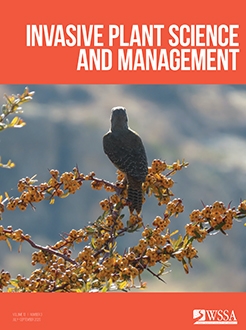Medusahead [Taeniatherum caput-medusae (L.) Nevski] is one of the most detrimental invasive annual grasses impacting the sustainability and function of rangeland in the western United States. This annual grass possesses high concentrations of tissue silicon (Si) that may facilitate invasion through key plant characteristics such as increased plant fitness, structure, and antinutritive qualities. These characteristics may affect known invasive processes such as increased plant productivity, slow litter decomposition, and decreased herbivory, facilitating a positive feedback cycle of invasion. However, Si is not considered an essential element and is often overlooked as a factor of T. caput-medusae invasion. Thus, this article provides a synthesis of plant Si, T. caput-medusae, and the self-reinforcing feedback cycle of invasion. We also discuss how current control strategies address plant characteristics determined by Si and suggest research avenues that may aid in novel or improved control strategies that target the T. caput-medusae–silica relationship.
How to translate text using browser tools
14 July 2020
Plant silicon as a factor in medusahead (Taeniatherum caput-medusae) invasion
Casey N. Spackman,
Thomas A. Monaco,
Clinton A. Stonecipher,
Juan J. Villalba
ACCESS THE FULL ARTICLE
invasion feedback
plant fitness
plant physiology
weed control






